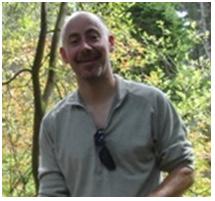 Cameron Alexander received degrees (BSc and PhD) in Chemistry from the University of Durham, UK, and carried out post-doctoral research at the Melville Laboratory for Polymer Synthesis, University of Cambridge. He took up an EPSRC Advanced Research Fellowship before moving to the School of Pharmacy, University of Nottingham in June 2005. Professor Alexander was promoted to a personal Chair in Polymer Therapeutics at Nottingham in 2009, where he is also Head of the Division of Drug Delivery and Tissue Engineering, and Operations Director of the EPSRC/AstraZeneca/University of Nottingham Doctoral Training Centre in Targeted Therapeutics. He is a Fellow of the Royal Society of Chemistry, a member of the Editorial Board of Journal of Materials Chemistry, and has published more than 100 refereed articles. Research in his group centres on the synthesis of responsive/‘smart’ materials for biomedical applications. Professor Alexander is currently an EPSRC Leadership Fellow (2009-2014) in the area of personalised medicines.
Cameron Alexander received degrees (BSc and PhD) in Chemistry from the University of Durham, UK, and carried out post-doctoral research at the Melville Laboratory for Polymer Synthesis, University of Cambridge. He took up an EPSRC Advanced Research Fellowship before moving to the School of Pharmacy, University of Nottingham in June 2005. Professor Alexander was promoted to a personal Chair in Polymer Therapeutics at Nottingham in 2009, where he is also Head of the Division of Drug Delivery and Tissue Engineering, and Operations Director of the EPSRC/AstraZeneca/University of Nottingham Doctoral Training Centre in Targeted Therapeutics. He is a Fellow of the Royal Society of Chemistry, a member of the Editorial Board of Journal of Materials Chemistry, and has published more than 100 refereed articles. Research in his group centres on the synthesis of responsive/‘smart’ materials for biomedical applications. Professor Alexander is currently an EPSRC Leadership Fellow (2009-2014) in the area of personalised medicines.
Please follow the link for further information on Cameron’s research group and his recent paper in Polymer Chemistry.
What was your inspiration in becoming a chemist?
I have always been fascinated by science, but have also always felt that practical value and application are important, hence the study of chemistry and my subsequent move into polymers and pharmaceutical materials. As is no doubt the case with many career scientists I was lucky to have great chemistry teachers and mentors throughout my career, from school, through an industry gap year with Ciba-Geigy, then at university in Durham and on to my current position at Nottingham. In chemistry and related disciplines, you have a chance to be creative, work with a whole range of amazing people and ideally, do something that is of value to others. We try to inspire in turn, and again I have been lucky to be part of Brady Haran’s fantastic Test-Tube project at Nottingham (see http://www.test-tube.org.uk/). The Periodic Table videos he has done with Martyn Poliakoff, Pete Licence and others are an inspiration in themselves.
What was the motivation behind the research in your recent Polymer Chemistry paper? (DOI: 10.1039/C1PY00128K)
In a School of Pharmacy we combine fundamental and applied science interests, and modifying the properties of natural materials with polymers fits into both categories. In addition to their intended roles in biology, many biopolymers, and especially proteins, might act as powerful drugs but they are often too easily degraded to be used in a standard injectable formulation. Decorating proteins with polymers can enhance their stability as well as increase their circulation time in the body, but also can reduce their intended activity too. By attaching polymers that can collapse or expand dependent on a stimulus, we intend to keep the enhanced stability of the polymer-protein conjugate, but switch the enzyme back to a highly active state when needed by collapsing the attached polymer. Here we developed methods to modify trypsin, a well-known protease, but in ways that allowed the chemistries to be done entirely in aqueous media, and with polymer architectures that allowed us to play with the way the polymer-trypsin conjugate assembled in solution. In turn, this allowed us to direct the activity of the enzyme – though of course not to the extent that we intended!
Why did you choose Polymer Chemistry to publish your work?
In part it was because it was a Themed Issue but also because the journal is becoming the go-to site for the polymer science that most overlaps with what we are doing. The Editorial Board are all strongly involved in the more multidisciplinary aspects of polymer science, so it makes sense for us to send our papers to Polym. Chem. as, if we get past the reviewers, the science will be very visible.
In which upcoming conferences may our readers meet you?
I will be at the Materials Chemistry 10 Conference (Manchester, July 2010), the UK PharmSci meeting (Nottingham, September 2011) and the International Symposium on Stimuli-Responsive Materials (Hattiesburg, Mississippi) in October 2011 talking about responsive polymers.
How do you spend your spare time?
Pre-children days my spare time involved mountain walks, trying to play drums and a bit of volunteering for Amnesty International but now the realities of combining science with young(ish) children means the concept of spare time is pretty nebulous. However, I do manage the occasional attempt at playing squash and plan to hit a drum kit badly for the amusement or otherwise of delegates at next year’s Warwick Polymer meeting.
Which profession would you choose if you were not a scientist?
Mountain guide in Scotland – no contest.











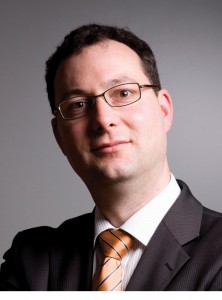

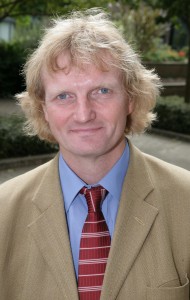
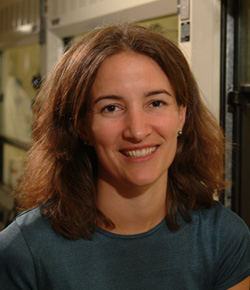 Heather D. Maynard received a B.S. with Honors in Chemistry from the University of North Carolina at Chapel Hill and a M.S. in Materials Science from the University of California, Santa Barbara. Her Ph.D. from the California Institute of Technology was awarded in the summer of 2000 for research in the group of Nobel Prize winner Robert Grubbs. She then moved to the laboratory of Jeffrey Hubbell at the Swiss Federal Institute of Technology in Zurich (ETH), where from 2000-2002 she was an American Cancer Society Postdoctoral Fellow. Dr. Maynard joined the UCLA faculty as an Assistant Professor in August 2002 as the first Howard Reiss Career Development Chair in the Department of Chemistry and Biochemistry and as a member of the California NanoSystems Institute. She is now an Associate Professor. Maynard’s research interests include polymer synthesis, biohybrid materials, surface modification, and nanomedicine.
Heather D. Maynard received a B.S. with Honors in Chemistry from the University of North Carolina at Chapel Hill and a M.S. in Materials Science from the University of California, Santa Barbara. Her Ph.D. from the California Institute of Technology was awarded in the summer of 2000 for research in the group of Nobel Prize winner Robert Grubbs. She then moved to the laboratory of Jeffrey Hubbell at the Swiss Federal Institute of Technology in Zurich (ETH), where from 2000-2002 she was an American Cancer Society Postdoctoral Fellow. Dr. Maynard joined the UCLA faculty as an Assistant Professor in August 2002 as the first Howard Reiss Career Development Chair in the Department of Chemistry and Biochemistry and as a member of the California NanoSystems Institute. She is now an Associate Professor. Maynard’s research interests include polymer synthesis, biohybrid materials, surface modification, and nanomedicine. Brent Sumerlin is Harold Jeskey Trustee Associate Professor in Department of Chemistry at Southern Methodist University. His research group focuses on well-defined polymeric materials with selected functionality, composition, and molecular architecture. Their particular interest is on polymers that are water-soluble and stimuli-responsive. Such “smart” polymers have the ability to self-assemble or dissociate in solution in response to changes in their surroundings. Potential target applications include controlled and targeted drug delivery, surface modification, and the synthesis of self-healing materials.
Brent Sumerlin is Harold Jeskey Trustee Associate Professor in Department of Chemistry at Southern Methodist University. His research group focuses on well-defined polymeric materials with selected functionality, composition, and molecular architecture. Their particular interest is on polymers that are water-soluble and stimuli-responsive. Such “smart” polymers have the ability to self-assemble or dissociate in solution in response to changes in their surroundings. Potential target applications include controlled and targeted drug delivery, surface modification, and the synthesis of self-healing materials.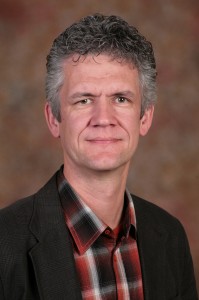
 Dr. Cyrille Boyer received his PhD in polymer chemistry in 2005 from the University of Montpellier II. His PhD was in collaboration with Solvay-Solexis and devoted to the synthesis of new graft copolymers using grafting “onto” under the supervision of Prof. B. Boutevin and Prof. J.J. Robin. In 2005, he undertook an engineer position with Dupont Performance and Elastomers dealing with the synthesis of original fluorinated elastomers using controlled radical polymerization (e.g., iodine transfer polymerization). In October 2006, he joined the Centre for Advanced Macromolecular Design (CAMD) as a senior research fellow under the direction of Prof. Tom Davis. In 2009, he got an Australian Post-Doctoral Fellowship from the Australian Research Council (ARC). Recently, Dr. Cyrille Boyer has been appointed as a Nanomedicine Lecturer at the University of New South Wales. His research interests mainly cover the preparation of well-defined polymers for drug delivery and imaging applications, protein-polymer conjugates and hybrid organic-inorganic nanoparticles using controlled radical polymerization. He is also working on the preparation of new systems for energy storage using hybrid organic/inorganic nanomaterials. He has co-authored over 70 peer-reviewed research papers, including two book chapters and two international patents.
Dr. Cyrille Boyer received his PhD in polymer chemistry in 2005 from the University of Montpellier II. His PhD was in collaboration with Solvay-Solexis and devoted to the synthesis of new graft copolymers using grafting “onto” under the supervision of Prof. B. Boutevin and Prof. J.J. Robin. In 2005, he undertook an engineer position with Dupont Performance and Elastomers dealing with the synthesis of original fluorinated elastomers using controlled radical polymerization (e.g., iodine transfer polymerization). In October 2006, he joined the Centre for Advanced Macromolecular Design (CAMD) as a senior research fellow under the direction of Prof. Tom Davis. In 2009, he got an Australian Post-Doctoral Fellowship from the Australian Research Council (ARC). Recently, Dr. Cyrille Boyer has been appointed as a Nanomedicine Lecturer at the University of New South Wales. His research interests mainly cover the preparation of well-defined polymers for drug delivery and imaging applications, protein-polymer conjugates and hybrid organic-inorganic nanoparticles using controlled radical polymerization. He is also working on the preparation of new systems for energy storage using hybrid organic/inorganic nanomaterials. He has co-authored over 70 peer-reviewed research papers, including two book chapters and two international patents. Didier Gigmes got his education in chemistry at the University Paul Cezanne (Marseille, France). In 1998, he received his PhD in organic chemistry under the guidance of Prof. Paul Tordo (Marseille, France). He completed a first postdoctoral fellowship at Elf-Atochem, North America in Pennsylvania (USA) under the supervision of Dr. Gary Silverman. Then, he came back to France to work as a postdoctoral fellow under the supervision of Prof. Paul Tordo in Marseille. In 2001 he obtained a position of researcher at CNRS to develop nitroxide-mediated polymerization (NMP). In 2008 he defended his Habilitation at the University of Provence and became a group leader in June 2008. In October 2010, he was appointed Research Director at CNRS. During the past few years he has been working on the development of NMP and particularly the design of a highly efficient SG1-based alkoxyamine. After a significant contribution to the understanding of the mechanisms involved in NMP, one of his main concerns is now to promote NMP in material science for various applications such as biomaterials, environment and energy.
Didier Gigmes got his education in chemistry at the University Paul Cezanne (Marseille, France). In 1998, he received his PhD in organic chemistry under the guidance of Prof. Paul Tordo (Marseille, France). He completed a first postdoctoral fellowship at Elf-Atochem, North America in Pennsylvania (USA) under the supervision of Dr. Gary Silverman. Then, he came back to France to work as a postdoctoral fellow under the supervision of Prof. Paul Tordo in Marseille. In 2001 he obtained a position of researcher at CNRS to develop nitroxide-mediated polymerization (NMP). In 2008 he defended his Habilitation at the University of Provence and became a group leader in June 2008. In October 2010, he was appointed Research Director at CNRS. During the past few years he has been working on the development of NMP and particularly the design of a highly efficient SG1-based alkoxyamine. After a significant contribution to the understanding of the mechanisms involved in NMP, one of his main concerns is now to promote NMP in material science for various applications such as biomaterials, environment and energy.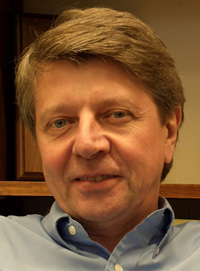 Krzysztof (Kris) Matyjaszewski received his PhD degree in 1976 at the Polish Academy of Sciences under Prof. S. Penczek. Since 1985 he has been at Carnegie Mellon University where he is currently J. C. Warner University Professor of Natural Sciences and director of Center for Macromolecular Engineering. He is also Adjunct Professor at the University of Pittsburgh and at the Polish Academy of Sciences. Kris is the editor of Progress in Polymer Science and Central European Journal of Chemistry. His publications have been cited over 42,000 times. His research interests include controlled/living radical polymerization, catalysis, environmental chemistry, and advanced materials for optoelectronic and biomedical applications.
Krzysztof (Kris) Matyjaszewski received his PhD degree in 1976 at the Polish Academy of Sciences under Prof. S. Penczek. Since 1985 he has been at Carnegie Mellon University where he is currently J. C. Warner University Professor of Natural Sciences and director of Center for Macromolecular Engineering. He is also Adjunct Professor at the University of Pittsburgh and at the Polish Academy of Sciences. Kris is the editor of Progress in Polymer Science and Central European Journal of Chemistry. His publications have been cited over 42,000 times. His research interests include controlled/living radical polymerization, catalysis, environmental chemistry, and advanced materials for optoelectronic and biomedical applications.